eXtensions - Thursday 9 March 2023
By Graham K. Rogers
![]()
A group from the Cluster of Logistics & Railway Engineering (CLARE) at the Faculty of Engineering, Mahidol University visited Bangkok's new Pink Line monorail. Information was given by MRTA that outlined the Yellow Line and Pink Line projects. Technical details were explained. With the driverless systems almost complete, the group visited the Pink Line workshops and were able to take a ride on a train.
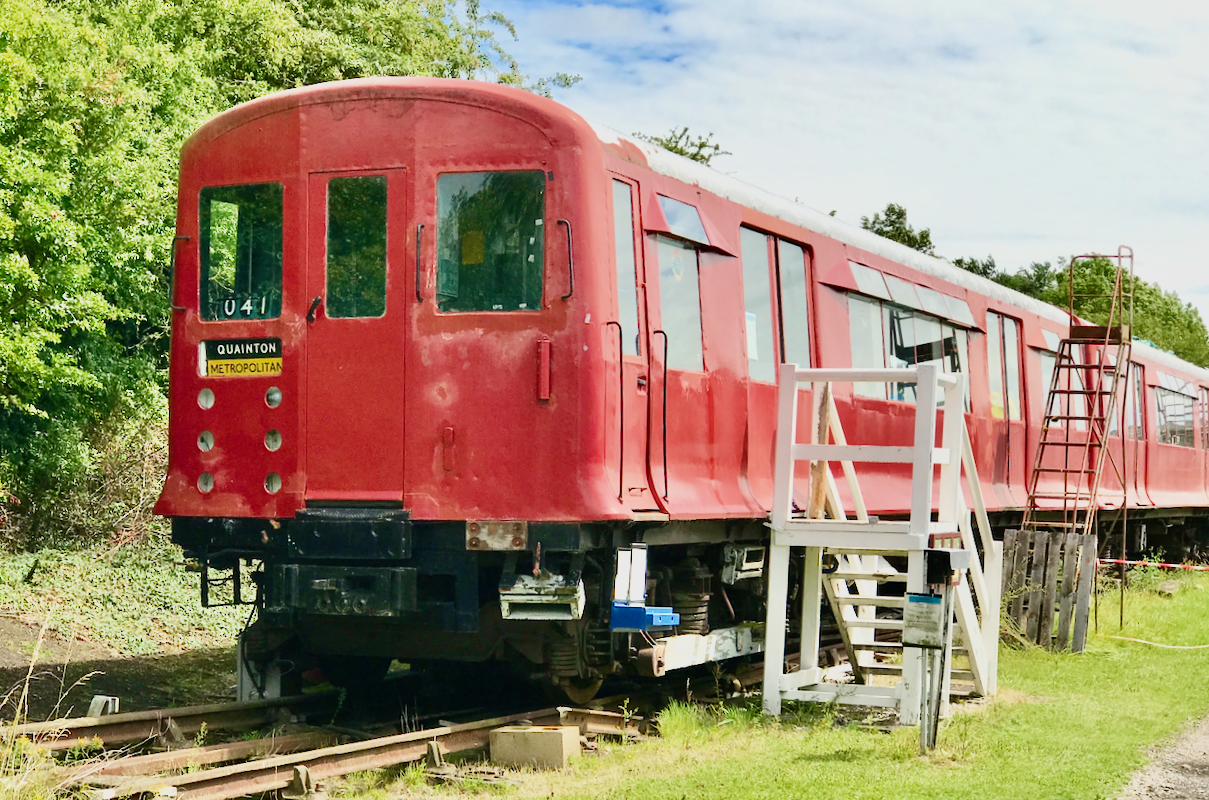
Major cities in other countries developed metro systems as well as light railways and trams which, along with bus systems allowed the mass transit systems to move many thousands of people each day. This provided those people with a new mobility that earlier forms of transport had not allowed. It became possible for better housing to be built and inner city slums to be demolished.
Bangkok was late to the metro party and had long relied on a road system that was inadequate for its population. This is estimated at 14,626,225 for the Bangkok Metropolitan Region (BMR), which includes the city and 6 provinces: Nonthaburi, Samut Prakan, Pathum Thani, Samut Sakhon and Nakhon Pathom. Like the London Underground 150 years before, when the first elevated commuter lines opened in Bangkok they served mainly the central city area, but soon began to expand. Plans for several other lines were developed.
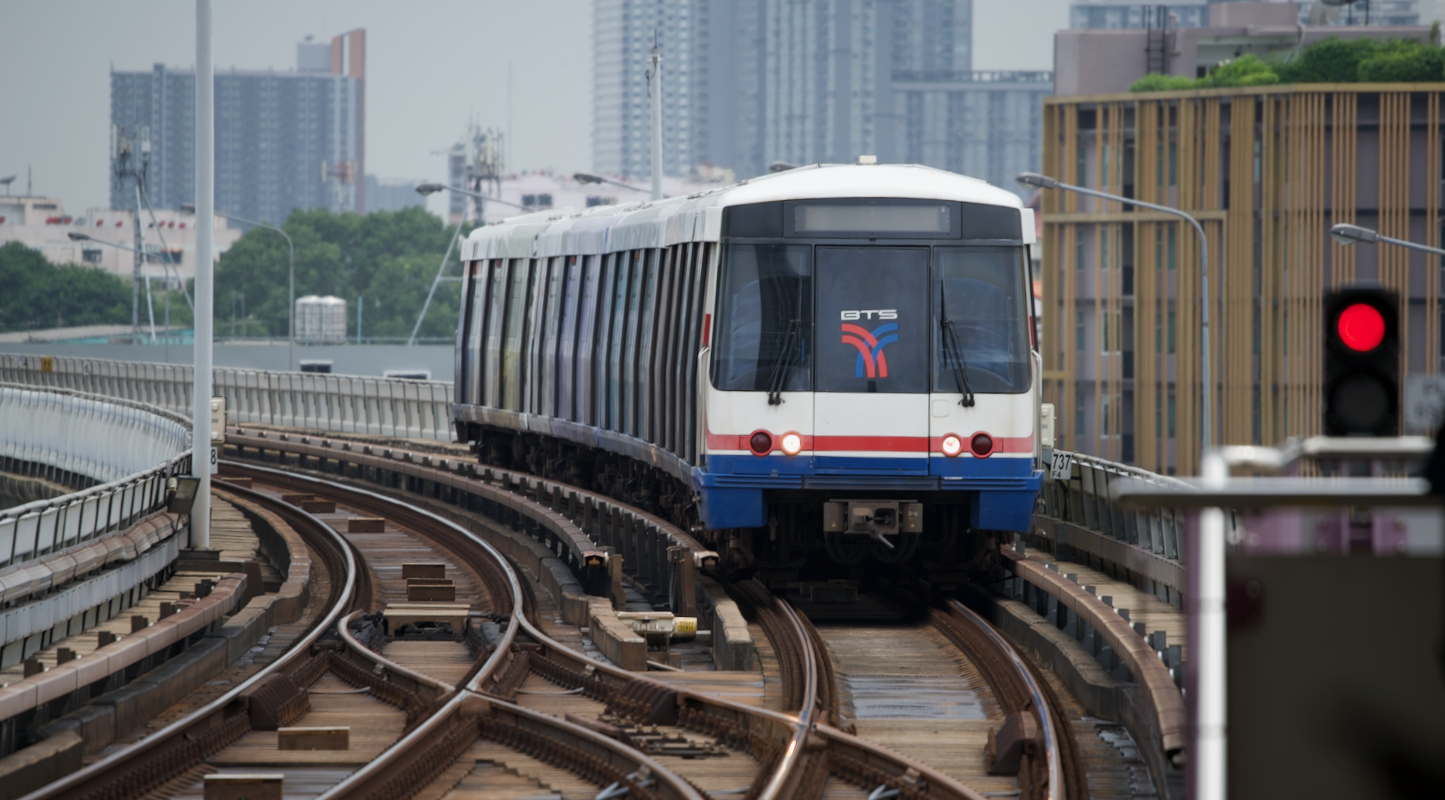
Initially, most new lines converged on the city center, but with their popularity and capacity, lines that began and ended on the edges of the city were planned. These include the Yellow Line from Samrong to Lat Phrao, and the 34.5Km Pink Line from Minburi to Nonthaburi Civic Center. This also has a spur line: to Lake Muang Thong Thani. Both of these projects are being developed as monorail systems with driverless trains.
The German Wuppertaler Schwebebahn, was built between 1897 and 1903 with a system of hanging cars. It still runs between Oberbarmen and Sonnborner Straße (10 kilometres or 6.2 miles) and about 8 metres (26 ft) above the valley road between Sonnborner Straße and Vohwinkel (Alchetron): the link has several images and video links.
Unlike the Wuppertaler Schwebebahn the Yellow and Pink lines run on concrete beams, similar to the Las Vegas system, but the technology used in these developments is almost identical to that used in the Chinese system in Wushu (Railtech). Like that project, Alstom provides many of the systems as well as the rolling stock for these two lines: the Innovia 300 Monorail system (Alstom).
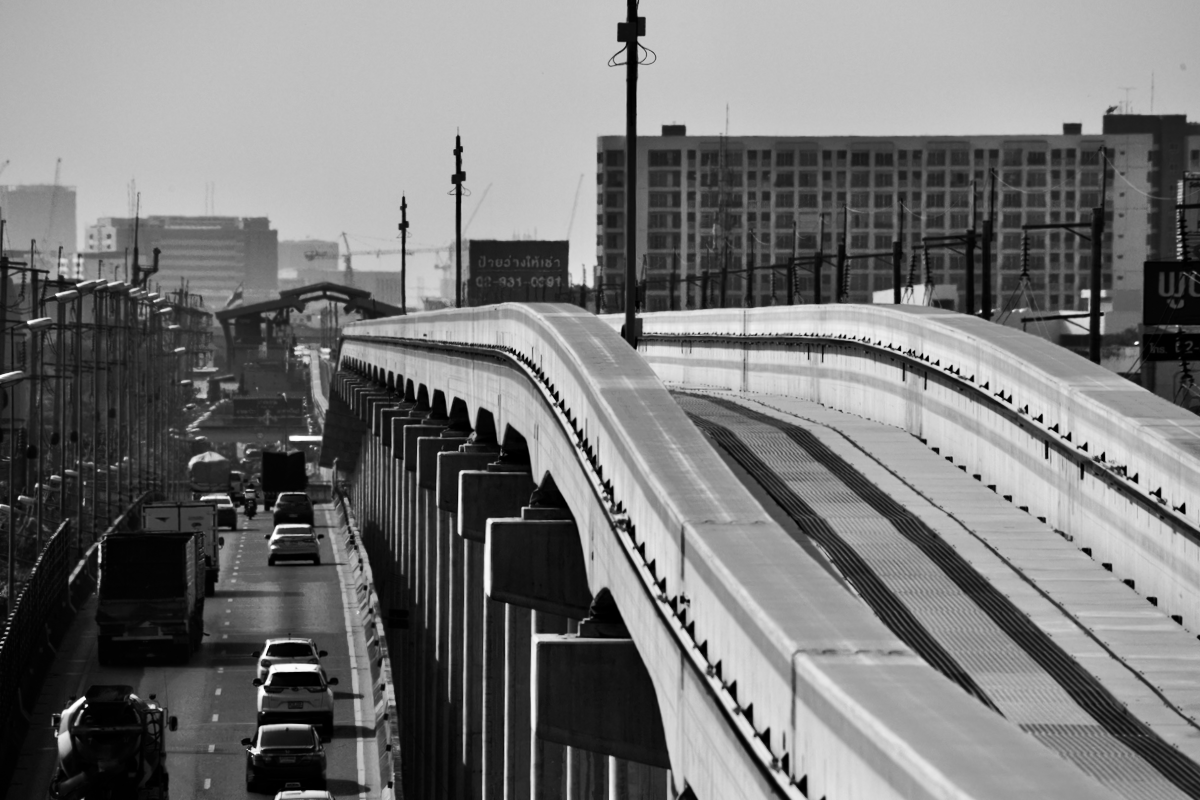
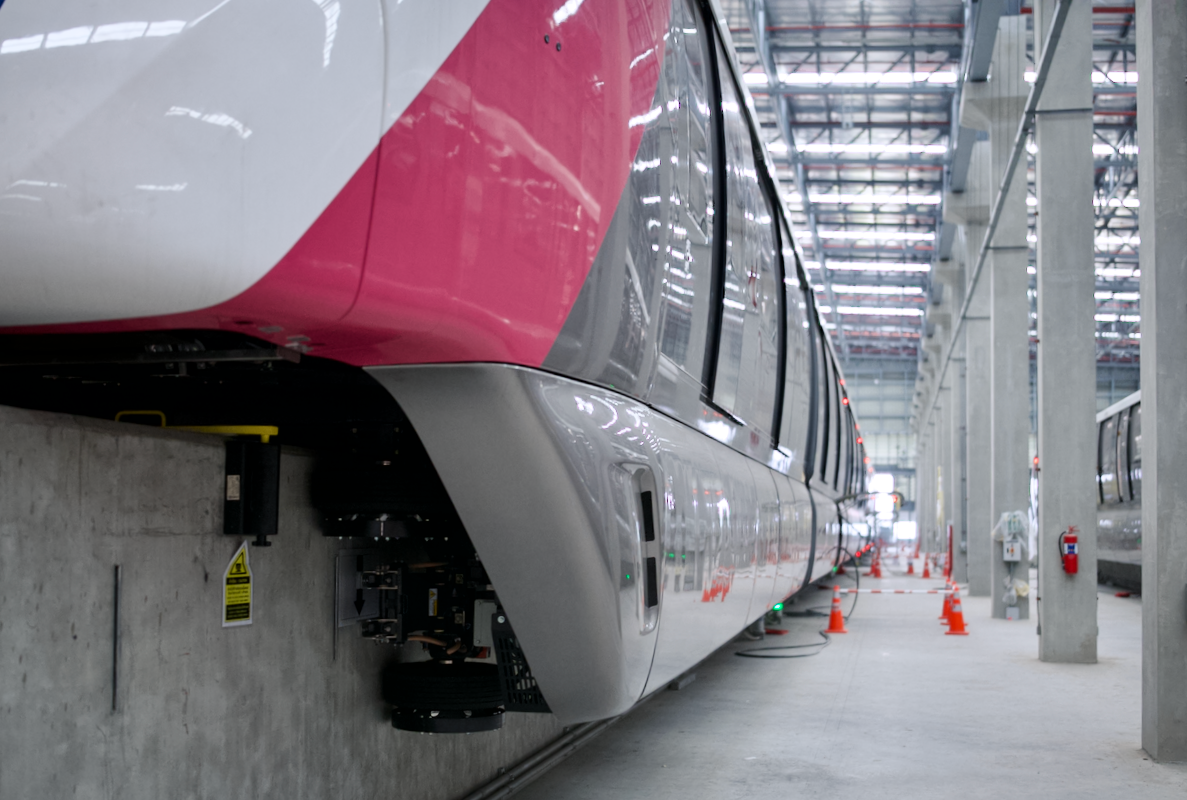
|
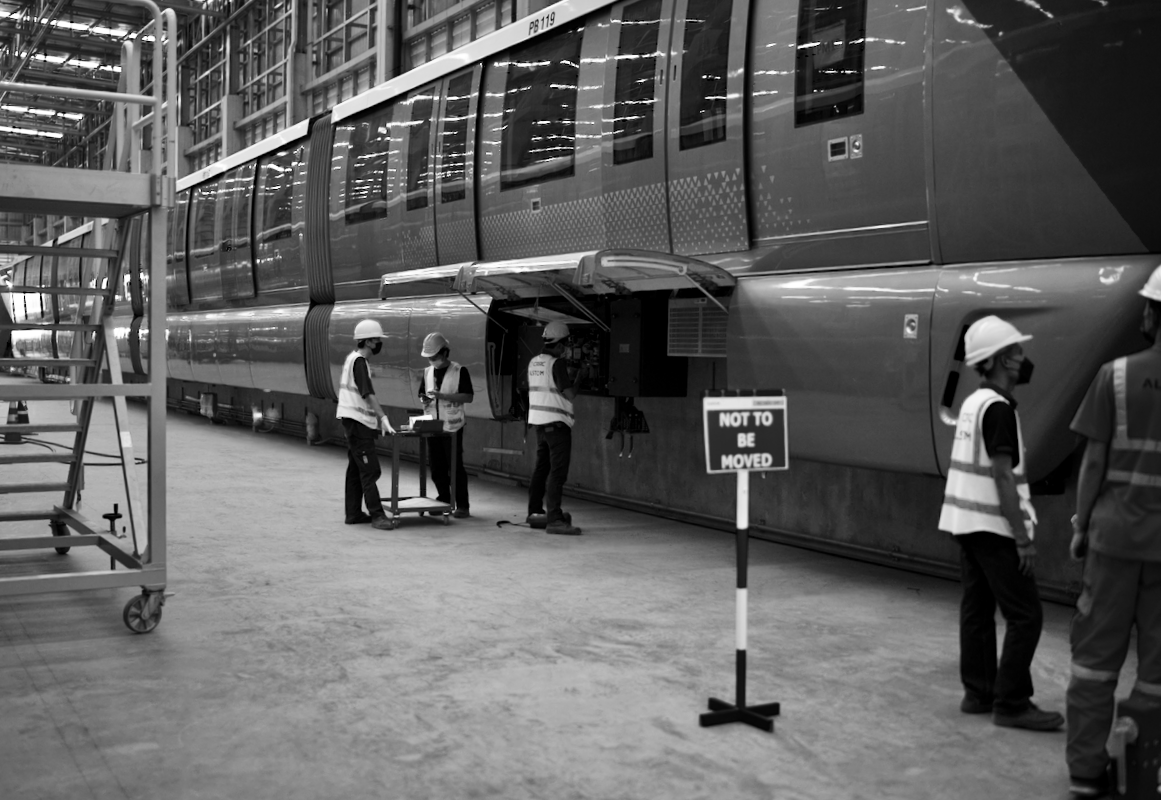
|
The Yellow Line has 30 trainsets which have now been delivered. The Pink Line will have 42 trainsets. The group were told that, so far, 41.5 have arrived with 2 more carriages on the way. As could be seen soon after, there were several sets in the workshops, while at least two trains are undergoing test runs currently. Platforms will handle 4-car sets initially, with the ability ultimately for 7-car sets. The 4-car Alstom units have two motor cars (A1 and B1) with two saloons (C1 and D1). Although the cars are driverless, the motor cars have full controls within locked cabinets. These cannot be used until an authorizing signal is sent from the control room, using the 5.8 GHz wireless network.
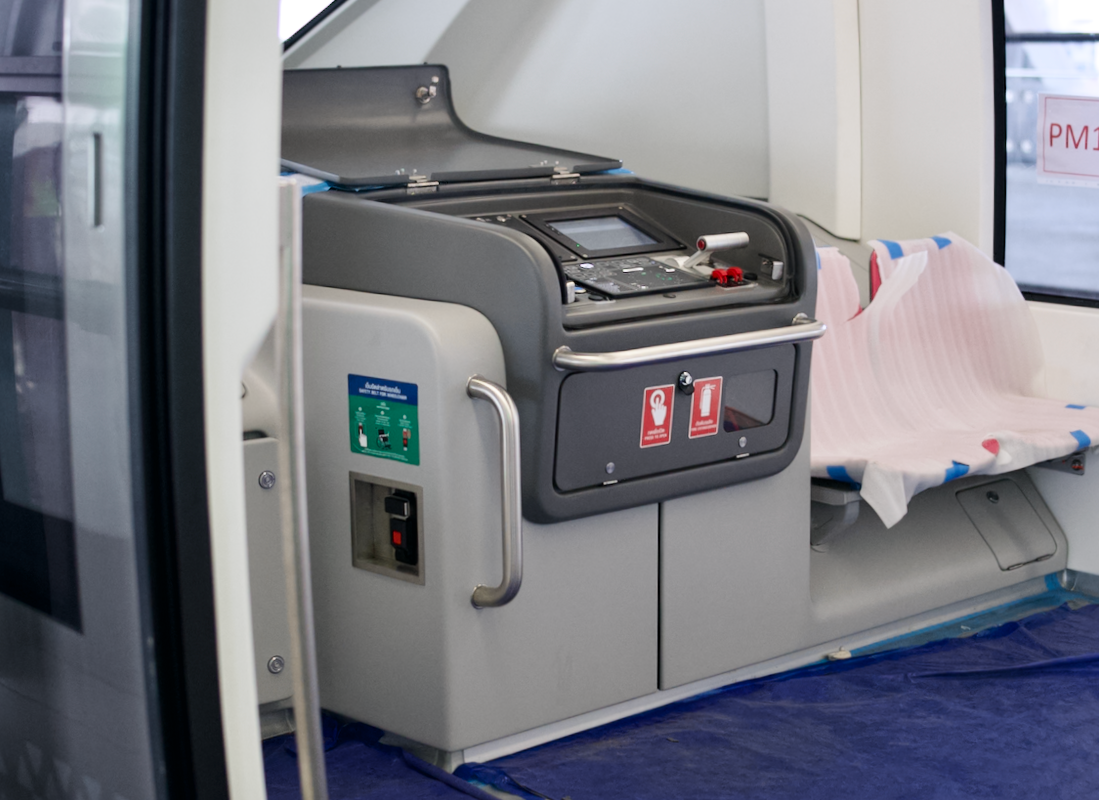
|
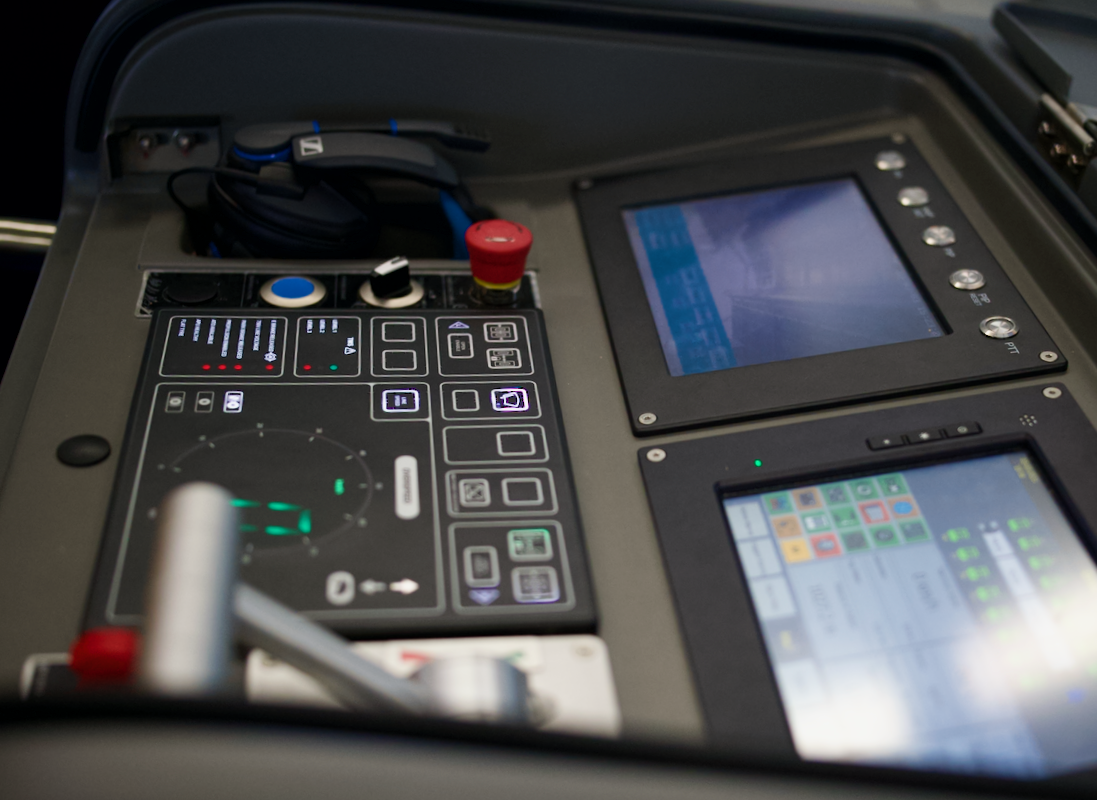
|
The wireless system sends commands to the trains and can be used for announcements to passengers. The trains are controlled by Cityflo 650 moving block train control technology developed by Bombardier: a train cannot enter a block until the system receives a signal that the block is clear. Each train and station also have CCTV for security. There are telephones in the trains for emergency passenger communications.
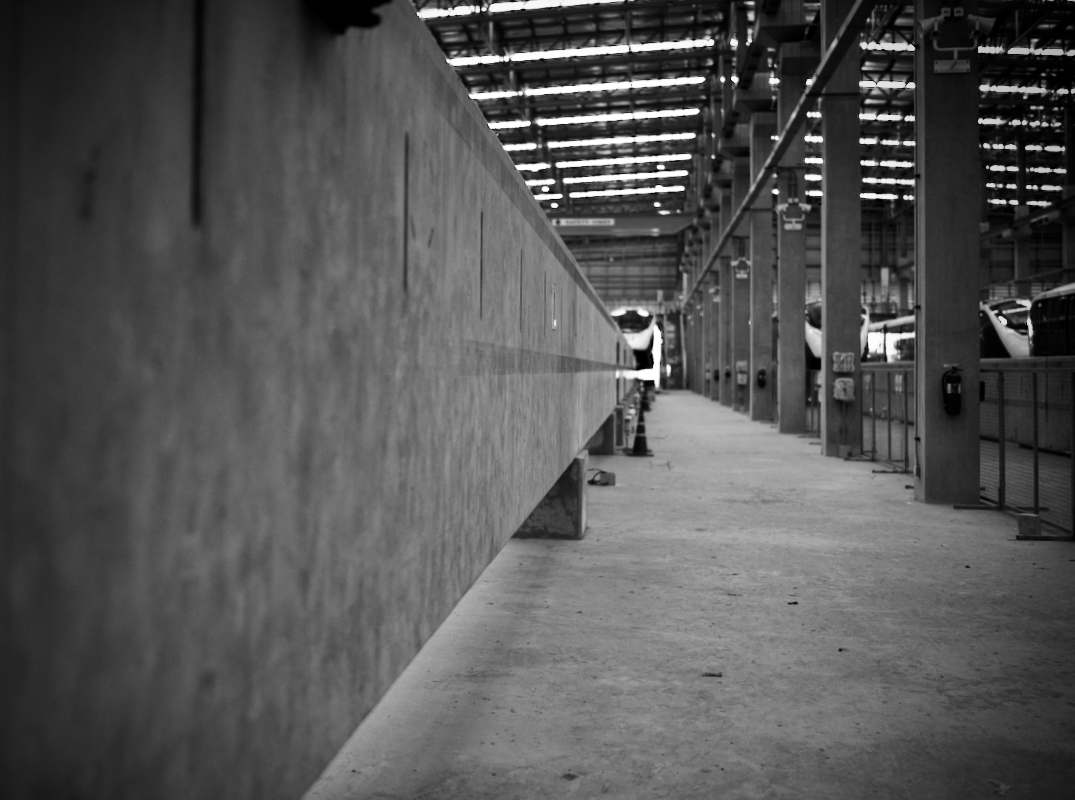
The trains run on concrete beams. These have a maximum length of 30 metres, so if construction needs a beam to be longer, steel is used. Unlike standard steel tracks, points switching sees the whole beam move to align with the other track. This takes about 5 seconds. Power for the trains is provided by a collector shoe that picks up current from a metal strip on the side of the beam.
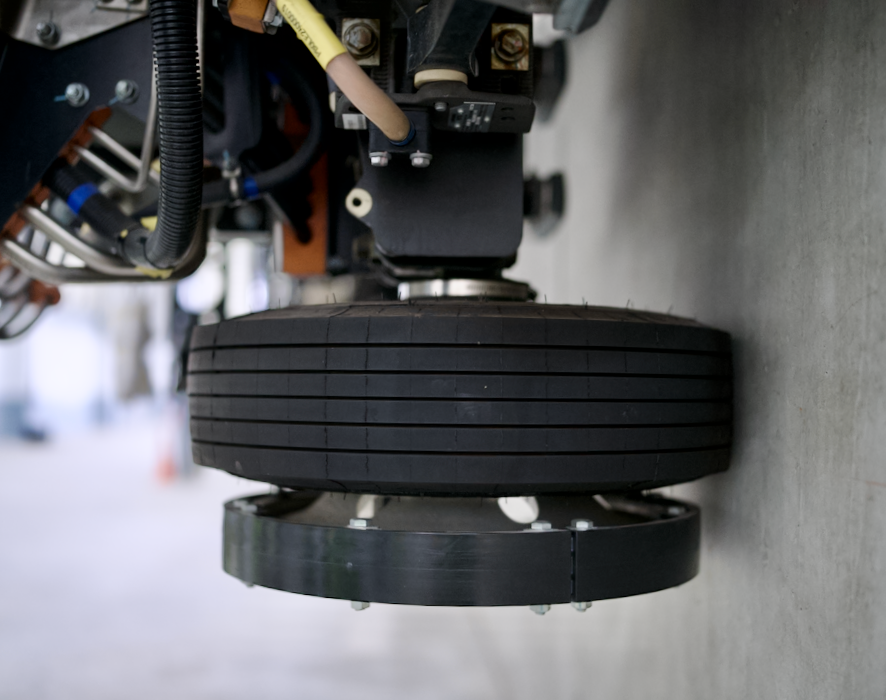
|
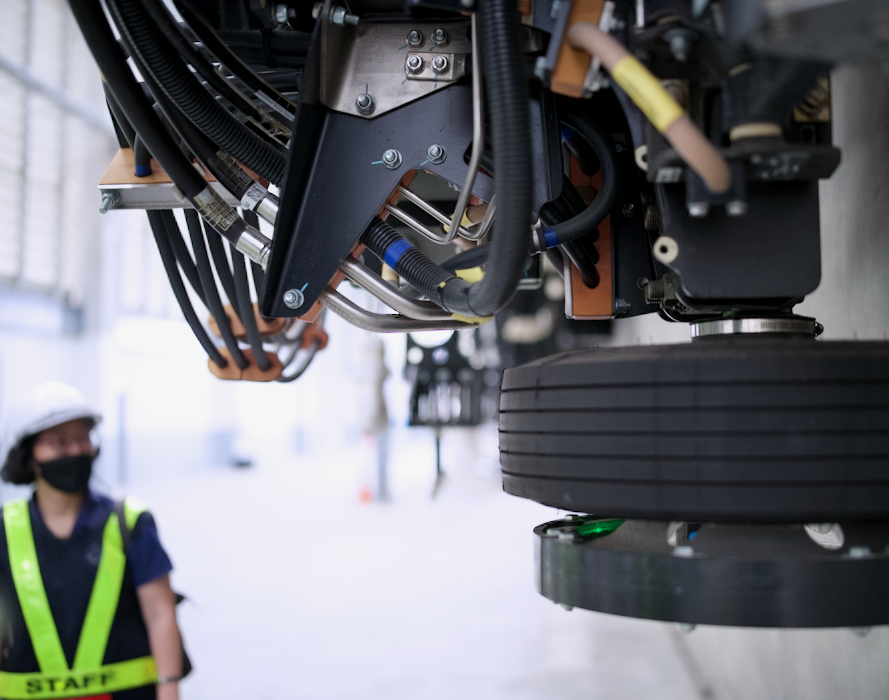
|
Although the trains are supported by drive wheels with rubber tyres that run along the top of the beam, on both sides are guide wheels (also with tyres) that ensure the train is running in the right direction. The group was able to have close look at these and the sophisticated mechanisms that have been developed for this. The tyres on the driving wheels should last for 120,000 Kms although will be replaced if faults are detected during inspections.
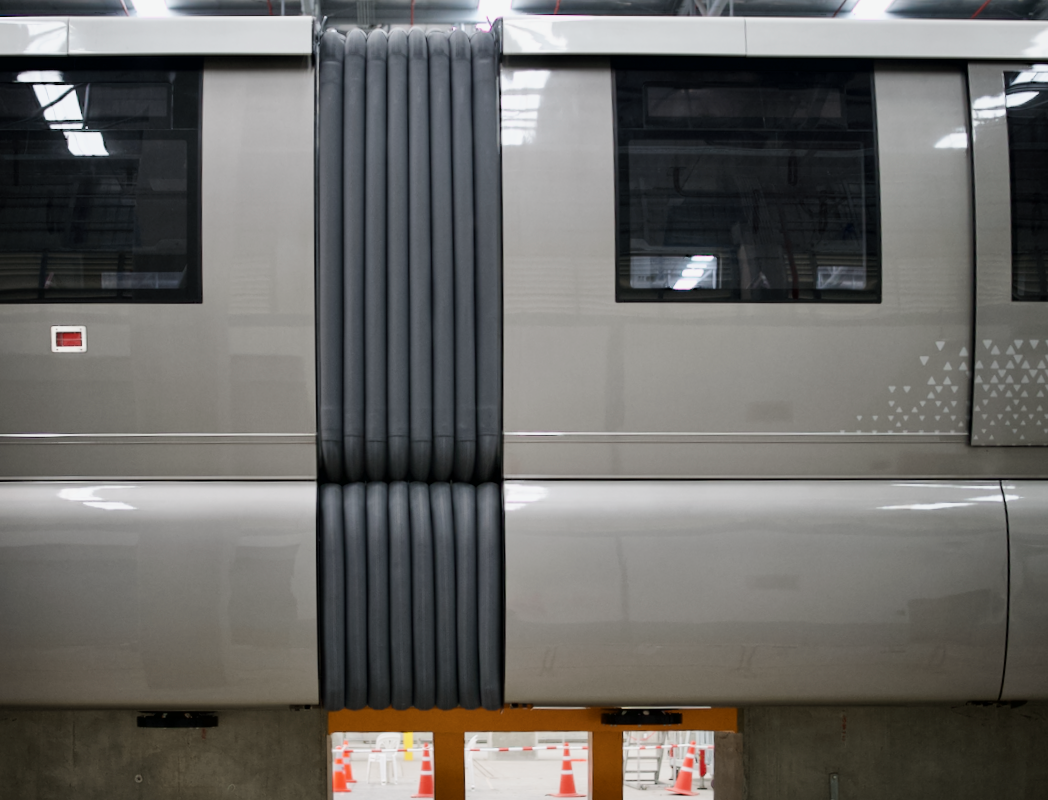
|
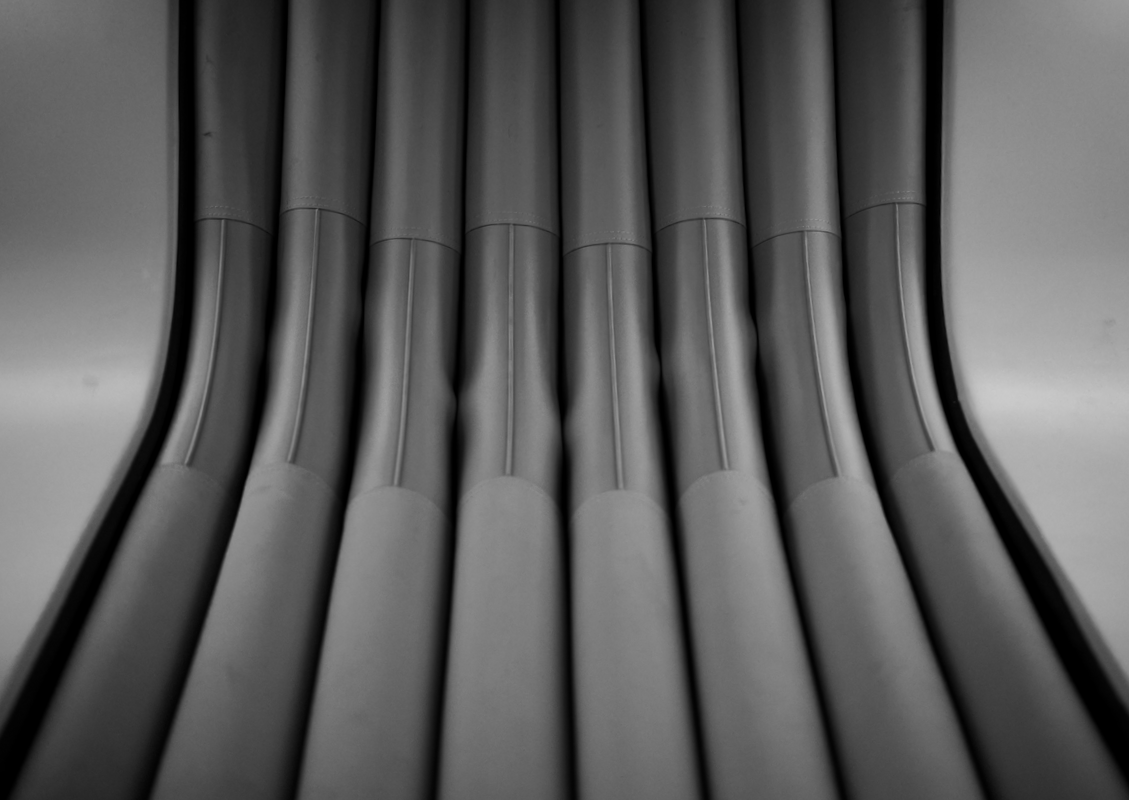
|
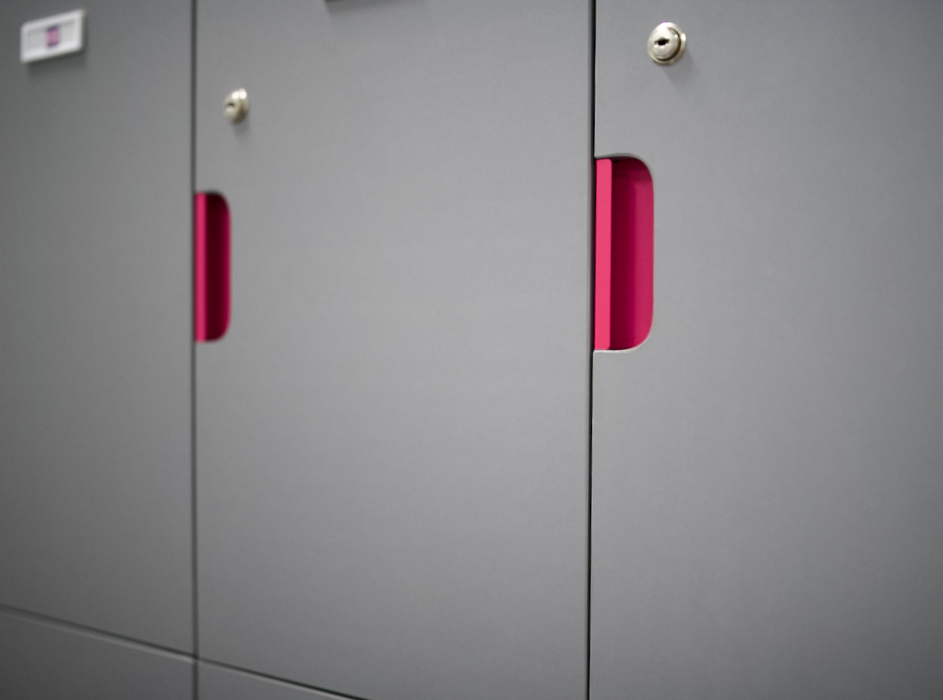
|
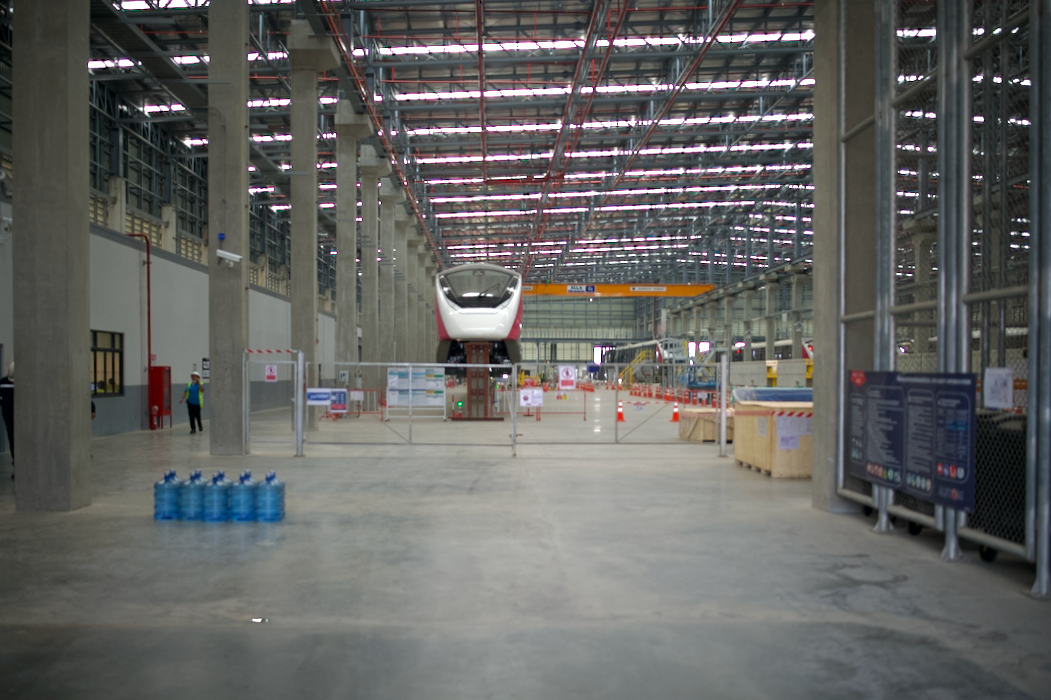
|
As the group entered the workshop, safety helmets and reflective jackets were issued, followed by instructions on safety. It was apparent during the tour how operational safety is emphasised here. This was also noted when another group from the Faculty of Engineering visited the BTS Khu Khot workshops a few months ago. It was possible to take a close look at some of the components beneath the trains as they were on elevated beams in the workshops (unlike pits in other workshops: Green Line, Red Line), although maintenance personnel have to use steps to work on some parts of the train units.
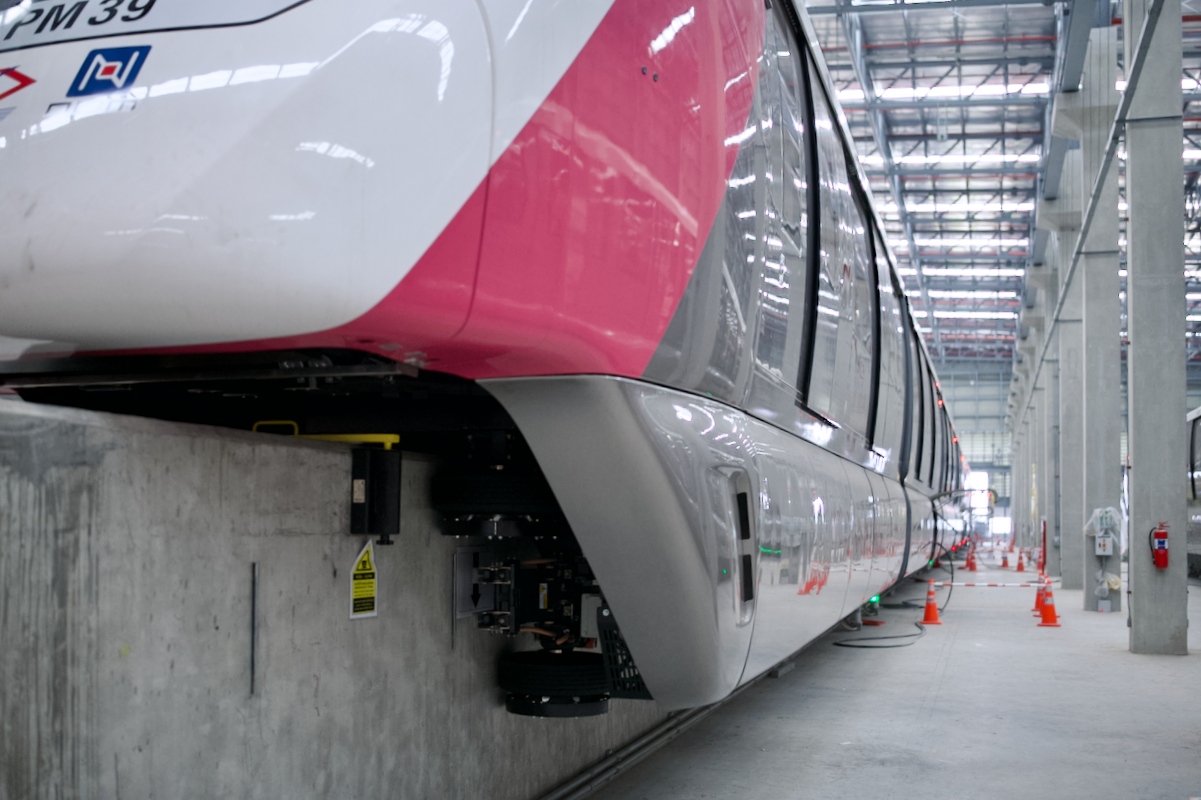
|
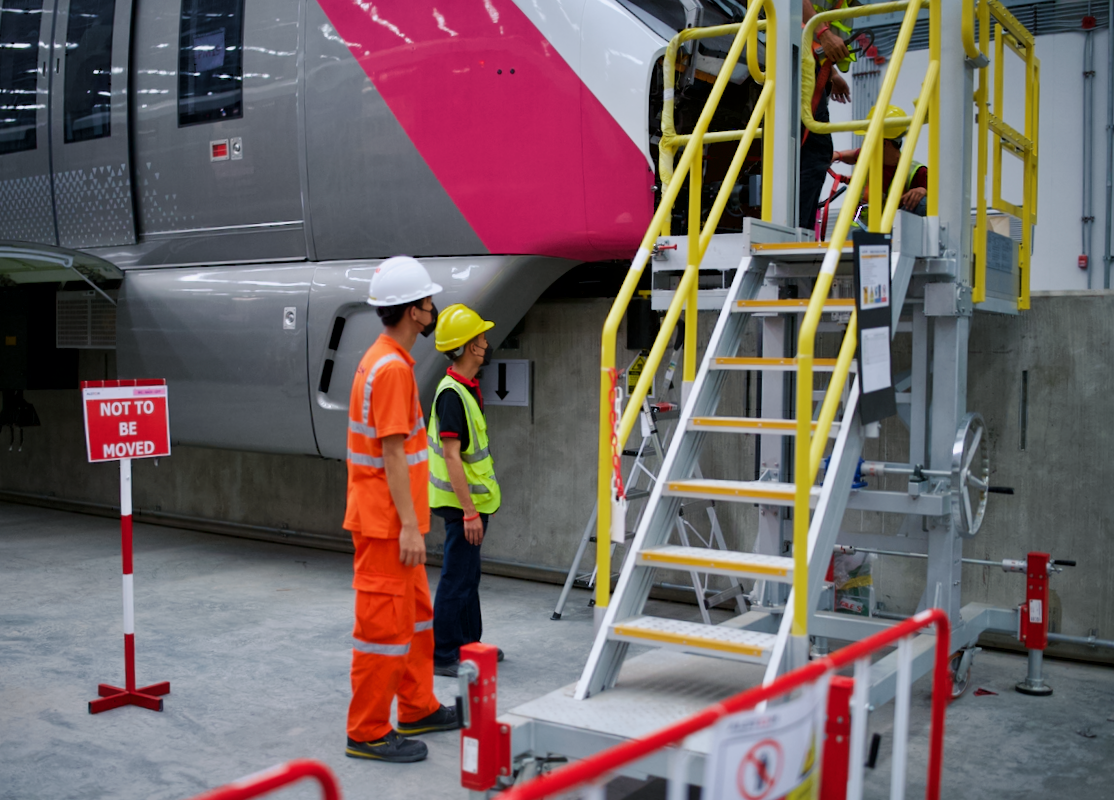
|
Following the tour of the workshop we were taken several kilometers to Lat Pla Khao station (PK18) and the section of track that was being used for testing. Initially it was not possible to enter the carriages as the control room had to send a signal for the doors to be opened, indicating how the trains are tightly controlled. When the doors opened the controls were visible in the front and back motor units: these are normally locked in cabinets. As the train was to head East we moved to the other end where an attendant (technician/driver) took over the controls although she had to wait for permission from the control room before they became active. When the train returned, the control panel in the other motor unit also had to receive commands before it could be used. Although the Pink Line uses a driverless system (GoA4) an attendant is used during the testing phase.
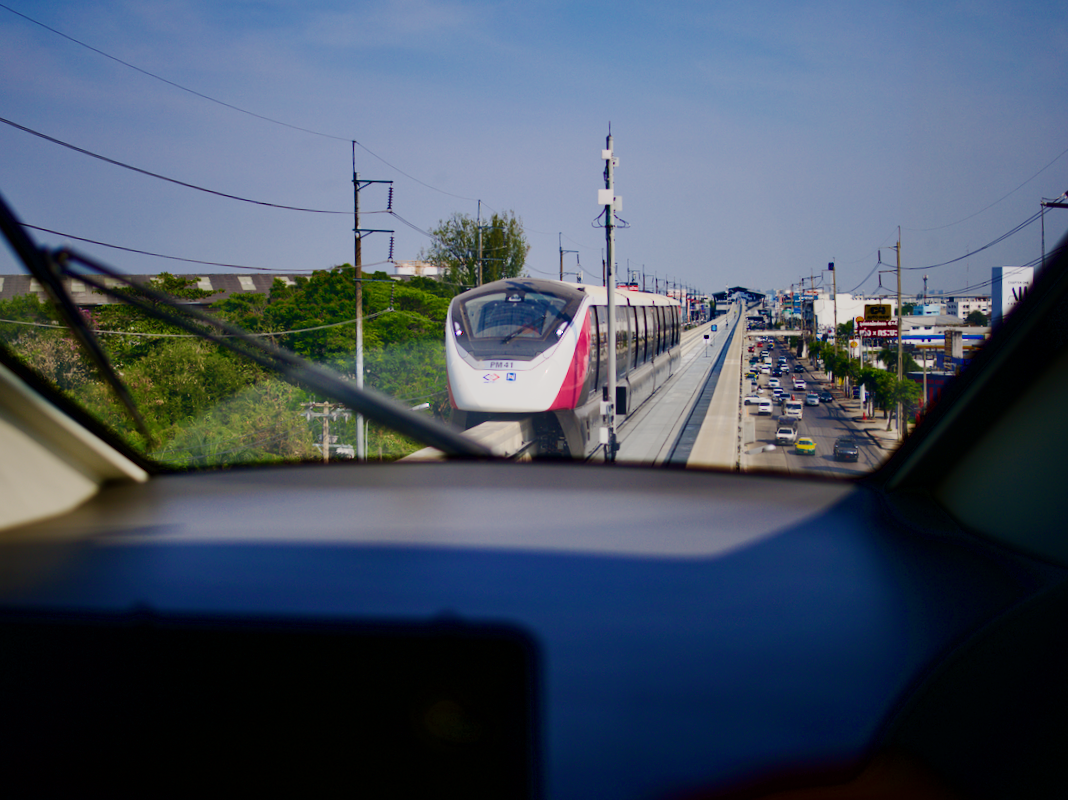
The other track was also being used to test a second train and this passed a couple of times. Although the units are capable of 80KPH, the journey was conducted at 37 KPH on this run. The ride was fairly smooth along the section of track used, although braking was a little jerky at times. With fewer seats in these units, more passengers will be standing at busy times, so it would be better if this were less severe.
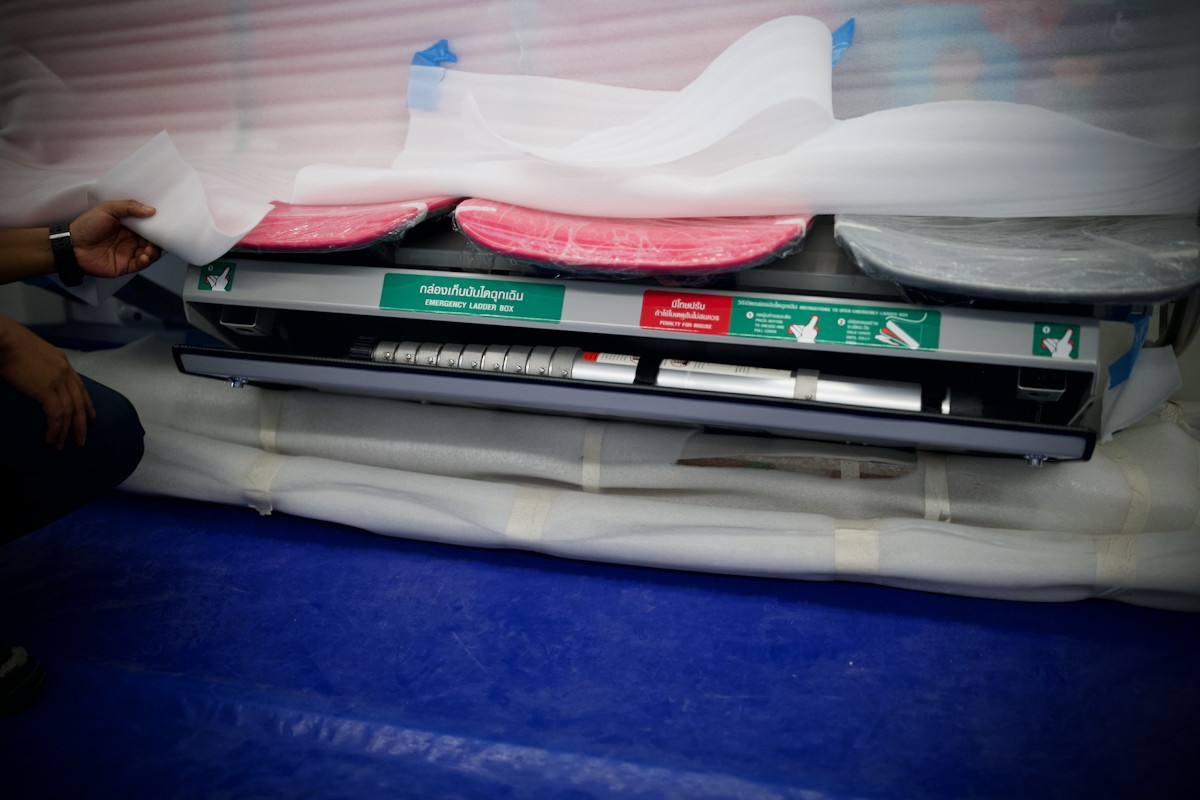
In the event of any emergency that would need a train evacuation, this will be controlled by station staff. However, if an emergency evacuation is needed, each carriage is equipped with an extendable ladder so that passengers could descend the 1.8 metres to the trackbed. In several years of other metro systems running in Bangkok, there has been little need for any evacuations, although it is well to be prepared.
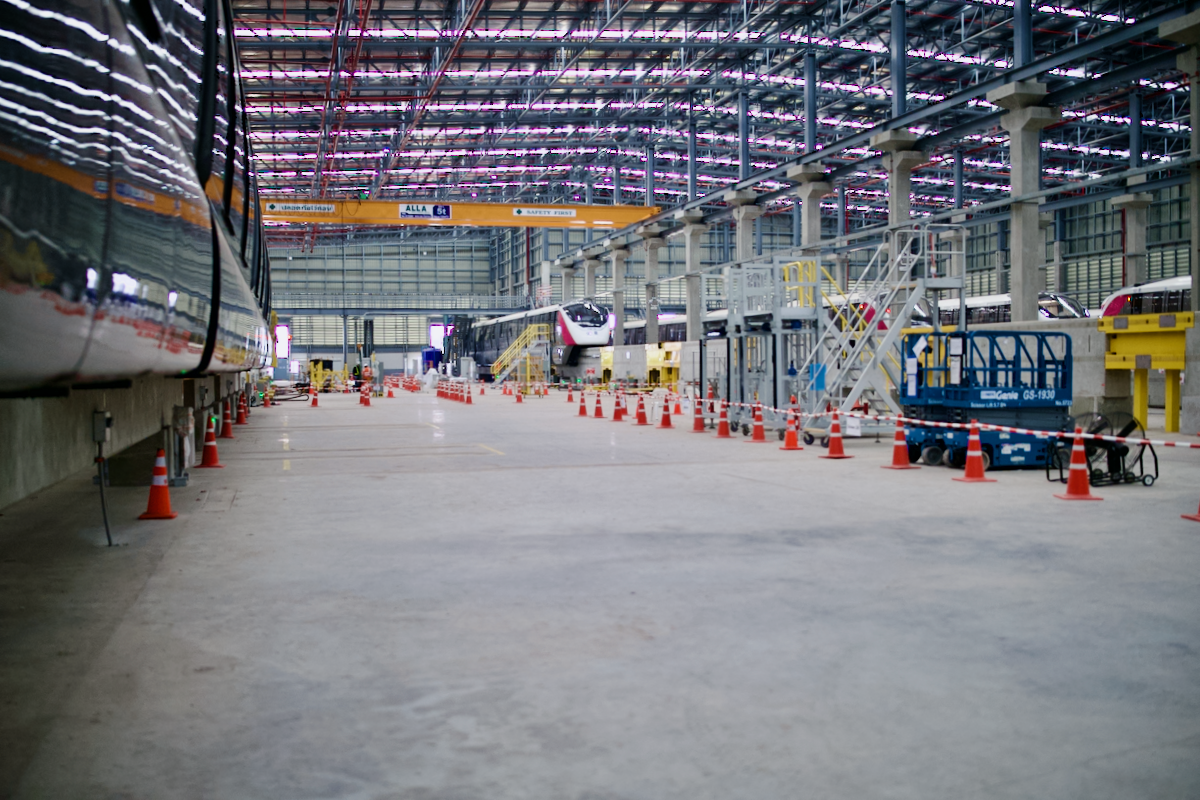
Bangkok metro systems took a long time to get off the ground, with considerable opposition from some quarters. Like London over a century ago, after the clear success of the first lines to open, including the Airport Link (ARL), plans for more lines, with an emphasis on integration were set in motion. These included the new main-line railway terminus with two metro lines and a plan for a high speed rail system. Some of the plans, such as the Mahachai extension of the Red Line, are perhaps over-ambitious and could take several years to reach the contract stage. There have also been problems with contracts, which have seen the Orange Line put on hold at this time.
Although the metro trains are crowded at certain times of the day, the convenience to Bangkok commuters is clear and mirrors that of those in other cities. The users in north and east Bangkok can look forward to the time when Pink and Yellow Lines come into operation and those in Bangkok can enjoy the same widespread services as in other cities round the world.
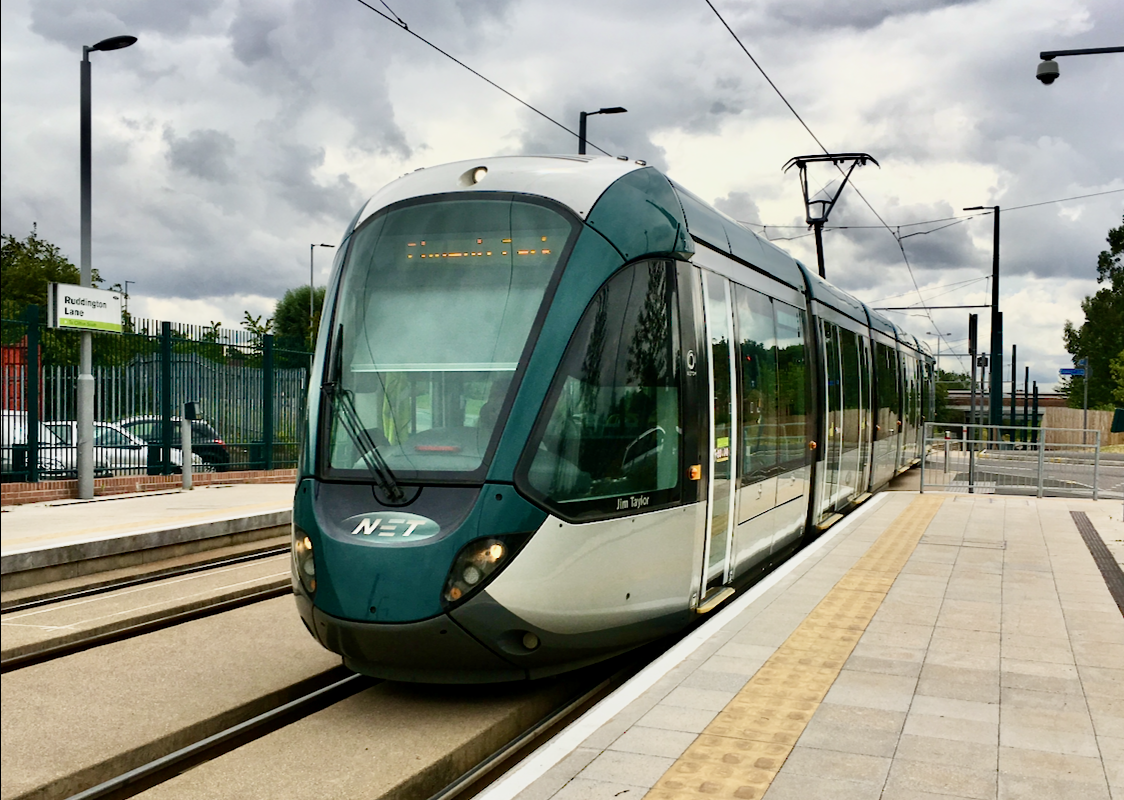
Graham K. Rogers teaches at the Faculty of Engineering, Mahidol University in Thailand. He wrote in the Bangkok Post, Database supplement on IT subjects. For the last seven years of Database he wrote a column on Apple and Macs. After 3 years writing a column in the Life supplement, he is now no longer associated with the Bangkok Post. He can be followed on Twitter (@extensions_th)

For further information, e-mail to
Back to
eXtensions
Back to
Home Page